
Borodino to Waterloo: Rayevsky’s Redoubt, the wounding of the Prince of Orange & d’Erlon’s attack
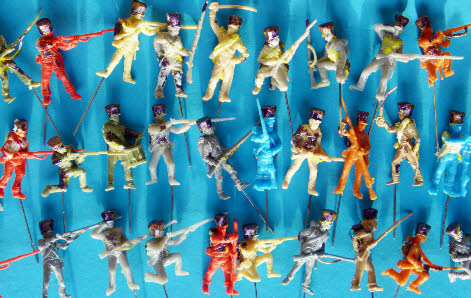



The Dutch & Belgian soldiers
The Netherlands in 1815 had not long been an independent country, having previously been incorporated into Napoleonic France. 1814 has seen what is today northern Belgium added to the Kingdom. Of the Netherlands units to be shown in the diorama, the 7th Line is a Belgium unit, the others Dutch.
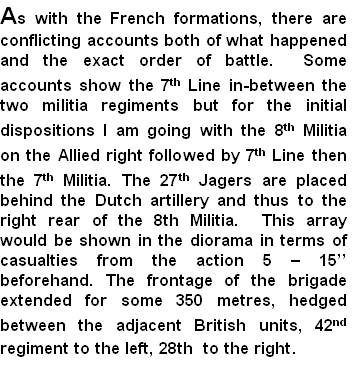
The 7th Militia are largely engaged by Marcognet’s division, augmented then replaced by British infantry who also then gave way. The 7th Line and 8th Militia engage the opposing French column and when the 7th Militia retreat (but do not run away) they move back towards the second line (Dutch 5th Militia and British infantry) but leave the 7th Line’s flank companies to augment the 27th who are now effectively in the front line, though skewed to the west. The other regiments are reformed and the Prince of Orange orders a counter-attack with the bayonet and this movement forward is caught in my diorama. The 7th Line and 8th Militia have exchanged places, the 8th are finishing dressing their ranks having let the British cavalry through (at a walk/trot only)
The 7th Line
http://7delinie.be/ The battalion was made up of volunteers from the Ghent region and most of East-Flanders. But it also consisted of a lot of other strange fellows like men from Brabant, Antwerp, West-Flanders, Prussia, Austria, an Hungarian, two Americans and several other nationalities. A lot of them were veterans who had served under the French Imperial Eagle. At the end of the battle the 7th counts about 250 men killed, wounded or missing.
http://7delinie.be/ The battalion was made up of volunteers from the Ghent region and most of East-Flanders. But it also consisted of a lot of other strange fellows like men from Brabant, Antwerp, West-Flanders, Prussia, Austria, an Hungarian, two Americans and several other nationalities. A lot of them were veterans who had served under the French Imperial Eagle. At the end of the battle the 7th counts about 250 men killed, wounded or missing.
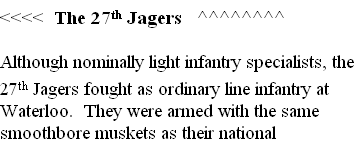
The troops shown here are from the flank companies, with their distinctive shoulder “rolls”
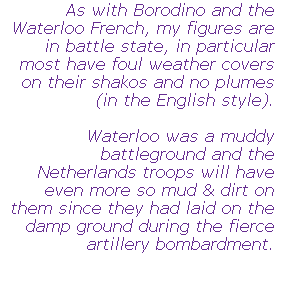


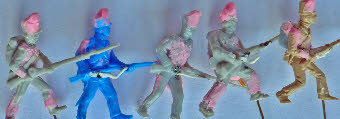






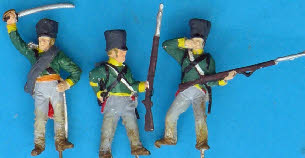

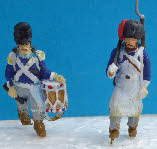

Figures shown are the first batch: still to do are the officers, dead and wounded and more figures. Also to go are the Militia and Artillery.
